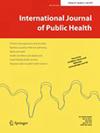基于欧洲健康访谈调查的匈牙利宫颈癌筛查出席率相关因素。
IF 2.4
3区 医学
Q2 PUBLIC, ENVIRONMENTAL & OCCUPATIONAL HEALTH
引用次数: 0
摘要
方法 采用多元回归和多重逻辑回归分析匈牙利欧洲健康访谈调查(2009 年、2014 年和 2019 年)的数据。结果 分析涉及 4850 名参与者,结果显示 10 年间宫颈癌筛查出席率从 69% 显著上升至 77%(p < 0.001)。与较高筛查率明显相关的因素包括:较高的教育水平(高等教育水平 AOR = 2.51 [2.03-3.09])、恋爱关系(AOR = 1.59 [1.39-1.83])、相信自己可以为健康做很多事情(OR = 1.26 [1.05-1.52])以及没有慢性健康问题(AOR = 1.56 [1.33-1.84])。筛查几率较低与自我感觉健康状况较差(AOR = 0.65 [0.52-0.81])、看医生(AOR = 0.64 [0.54-0.76])和看专科医生(AOR = 0.46 [0.39-0.53])的频率较低明显相关。要进一步提高参与率,尤其是已确定群体的参与率,需要采取公共卫生措施并加强医疗保健专业人员之间的合作。本文章由计算机程序翻译,如有差异,请以英文原文为准。
Factors Associated With Cervical Cancer Screening Attendance in Hungary Based on the European Health Interview Survey.
Objectives
This study assessed the change in cervical cancer screening attendance across 10 years and identified the associated factors.
Methods
Data from the European Health Interview Surveys in Hungary (2009, 2014, 2019) were analyzed with multivariate and multiple logistic regressions.
Results
The analysis involved 4,850 participants, revealing a significant (p < 0.001) increase in screening attendance from 69% to 77% over 10 years. Factors significantly associated with higher attendance rates included a higher education level (tertiary level AOR = 2.51 [2.03-3.09]), being in a relationship (AOR = 1.59 [1.39-1.83]), the belief that one can do much for one's health (OR = 1.26 [1.05-1.52]), and the absence of chronic health problems (AOR = 1.56 [1.33-1.84]). Lower screening odds were significantly correlated with worse self-perceived health status (AOR = 0.65 [0.52-0.81]) and less frequent doctor (AOR = 0.64 [0.54-0.76]) and specialist visits (AOR = 0.46 [0.39-0.53]).
Conclusion
Enhancing cervical cancer screening rates requires tailored public health strategies, particularly targeting individuals with lower education and poor health perceptions. Public health initiatives and enhanced collaboration among healthcare professionals are required to further increase participation rates, particularly among the identified groups.
求助全文
通过发布文献求助,成功后即可免费获取论文全文。
去求助
来源期刊

International Journal of Public Health
医学-公共卫生、环境卫生与职业卫生
CiteScore
4.20
自引率
2.20%
发文量
269
审稿时长
12 months
期刊介绍:
The International Journal of Public Health publishes scientific articles relevant to global public health, from different countries and cultures, and assembles them into issues that raise awareness and understanding of public health problems and solutions. The Journal welcomes submissions of original research, critical and relevant reviews, methodological papers and manuscripts that emphasize theoretical content. IJPH sometimes publishes commentaries and opinions. Special issues highlight key areas of current research. The Editorial Board''s mission is to provide a thoughtful forum for contemporary issues and challenges in global public health research and practice.
 求助内容:
求助内容: 应助结果提醒方式:
应助结果提醒方式:


